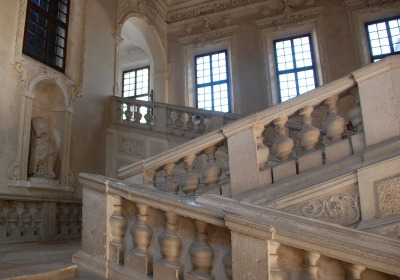AutoStyle 2010
Fri, 03 Dec 2010Earlier this year, we had the pleasure to attend AutoStyle 2010's design competition; a wonderfully familial, small-scale event that takes place in the picturesque village of San Benedetto Po, in northern Italy. Hosted by Berman, an aftermarket supplier of bespoke components to many OEMs, the event is a two-day gathering where many of the industry's designers, buyers and suppliers attend a conference to hear about the trends as perceived by automakers and to see the newest ‘special versions' created by budding designers.
The 7th edition of the AutoStyle design competition showcased a wide array of aftermarket designs for the Ferrari California, Nissan Micra, Ford Focus, Alfa Romeo Giulietta and the Citroen DS Highrider concept. Created by 12 young designers from various parts of Europe, the designs showed off the "meaningful car initiative that represent the different aspects of what we consider to be the future from an aesthetic design perspective," Berman CEO Roberto Artioli said, opening the event.
While the AutoStyle conference revolved around the competition, the winners are only revealed at the end of the event, marking the culmination of the two-day forum. This year's trophy was won by French design student Marc Poulain, from the Institut Supérieur du Design Valenciennes, France. Poulain won the best proposal accolade in the Urban Car/SUV category with his interpretation of the Citroën DS-High Rider concept, and also garnered best proposal in the Sports Cars category with his Ferrari California design. The award, a model of the Verona arena which hosted fights – and from where AutoStyle gets its name – was designed by the affable Eric Dubois, and features an inscription along the perimeter that reads: Sketch, design, viable, personalization, study, aesthetic, coordination, manufacturing, unique, functional, incremental, version speciale, cooperation. "These are the hallmarks of the design method," Dubois said.
Leading up to the announcement, a series of workshops featuring presentations from Claudio Messale, chief exterior designer for Ford of Europe; Fabio Fillipini, director of interior design at Renault; head of Audi Group design Wolfgang Egger and Klemens Rossnagel head of design research at Audi Group design; Flavio Manzoni, senior vice president of design at Ferrari; Atsushi Maeda, design director at Nissan Design Europe; and Rossella Guasco, color and materials designer at Fiat Group Automobiles, took place in the historic Abbey's former library.
Claudio Messale kicked off the program with a presentation about Ford of Europe's 'Kinetic Design', discussing the attributes of the design language in relation to vehicle architecture, proportions, form and detail. He spoke about the 2005 Iosis concept as providing the foundation for the convex forms characterized by sharp lines that eventually translated into the first vehicle to wear the new design ethos on its sleeve: the Mondeo. Following the unveiling of the sedan, Kinetic design also graced other vehicle typologies born from the same theme – the Galaxy, S-Max, Iosis X and Verve concepts all featured a different characterization of the same design elements. Tying Kinetic Design in with personalization, Messale also spoke about the 'Individual' line available on the Ka and the differentiation between the three versions of the new Focus.
Next to take the stage was Fabio Fillipini, speaking about the car of the future as envisioned by Renault. "Zero emissions does not mean zero emotions," Fillipini said, quoting the automaker's tagline. An architect by trade, Fillipini spoke about the beauty and historical value of the region's architectural structures as he drove up to San Bendetto Po. He mentioned how the contribution changes what we are about to experience in cars, stating that he hoped it would be as productive as other architectural changes in time. Renault is now 112 years old, Fillipini continued, stating that new paradigms demand new solutions. Just as the 4CV created in the aftermath of the Second World War, catered to the human societal needs of the era, so too were the automaker's Renault 4, R16, 5 and Espace models. Working from the premise that new paradigms are causing a shift on what consumers will demand from transportation, Fillipini cited a French quote: "the light bulb wasn't created by improving the candle." Electric cars, such as the Twizy, Kangoo, Zoe and Fluence models Renault is currently developing, will therefore play an important role in moving the motor vehicle towards a new design ethic, just as the iPhone did for the rotary telephone of the 60s.
Continues →
By Eric Gallina



